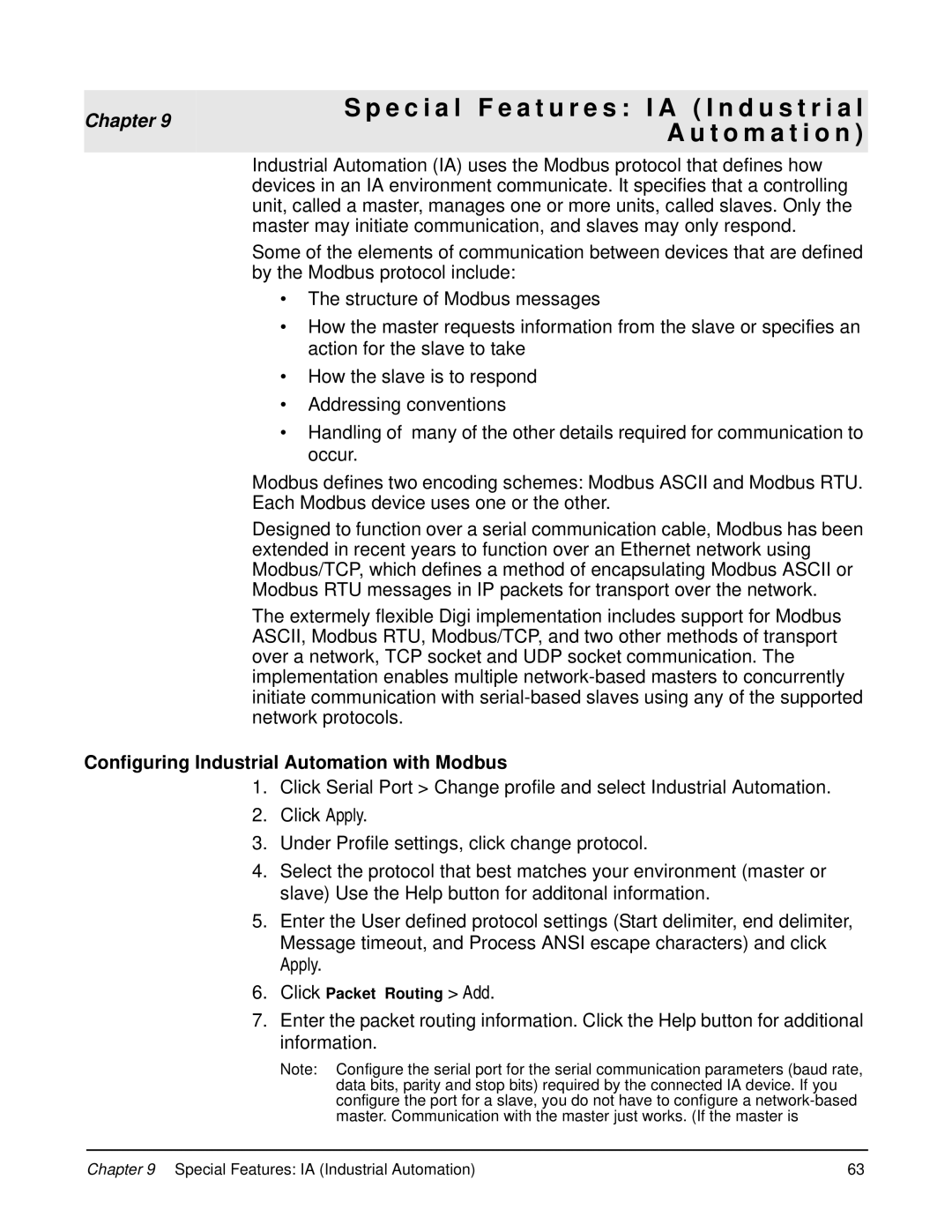
Chapter 9
S p e c i a l F e a t u r e s : I A ( I n d u s t r i a l A u t o m a t i o n )
Industrial Automation (IA) uses the Modbus protocol that defines how devices in an IA environment communicate. It specifies that a controlling unit, called a master, manages one or more units, called slaves. Only the master may initiate communication, and slaves may only respond.
Some of the elements of communication between devices that are defined by the Modbus protocol include:
•The structure of Modbus messages
•How the master requests information from the slave or specifies an action for the slave to take
•How the slave is to respond
•Addressing conventions
•Handling of many of the other details required for communication to occur.
Modbus defines two encoding schemes: Modbus ASCII and Modbus RTU. Each Modbus device uses one or the other.
Designed to function over a serial communication cable, Modbus has been extended in recent years to function over an Ethernet network using Modbus/TCP, which defines a method of encapsulating Modbus ASCII or Modbus RTU messages in IP packets for transport over the network.
The extermely flexible Digi implementation includes support for Modbus ASCII, Modbus RTU, Modbus/TCP, and two other methods of transport over a network, TCP socket and UDP socket communication. The implementation enables multiple
Configuring Industrial Automation with Modbus
1.Click Serial Port > Change profile and select Industrial Automation.
2.Click Apply.
3.Under Profile settings, click change protocol.
4.Select the protocol that best matches your environment (master or slave) Use the Help button for additonal information.
5.Enter the User defined protocol settings (Start delimiter, end delimiter, Message timeout, and Process ANSI escape characters) and click Apply.
6.Click Packet Routing > Add.
7.Enter the packet routing information. Click the Help button for additional information.
Note: Configure the serial port for the serial communication parameters (baud rate, data bits, parity and stop bits) required by the connected IA device. If you configure the port for a slave, you do not have to configure a
Chapter 9 Special Features: IA (Industrial Automation) | 63 |
